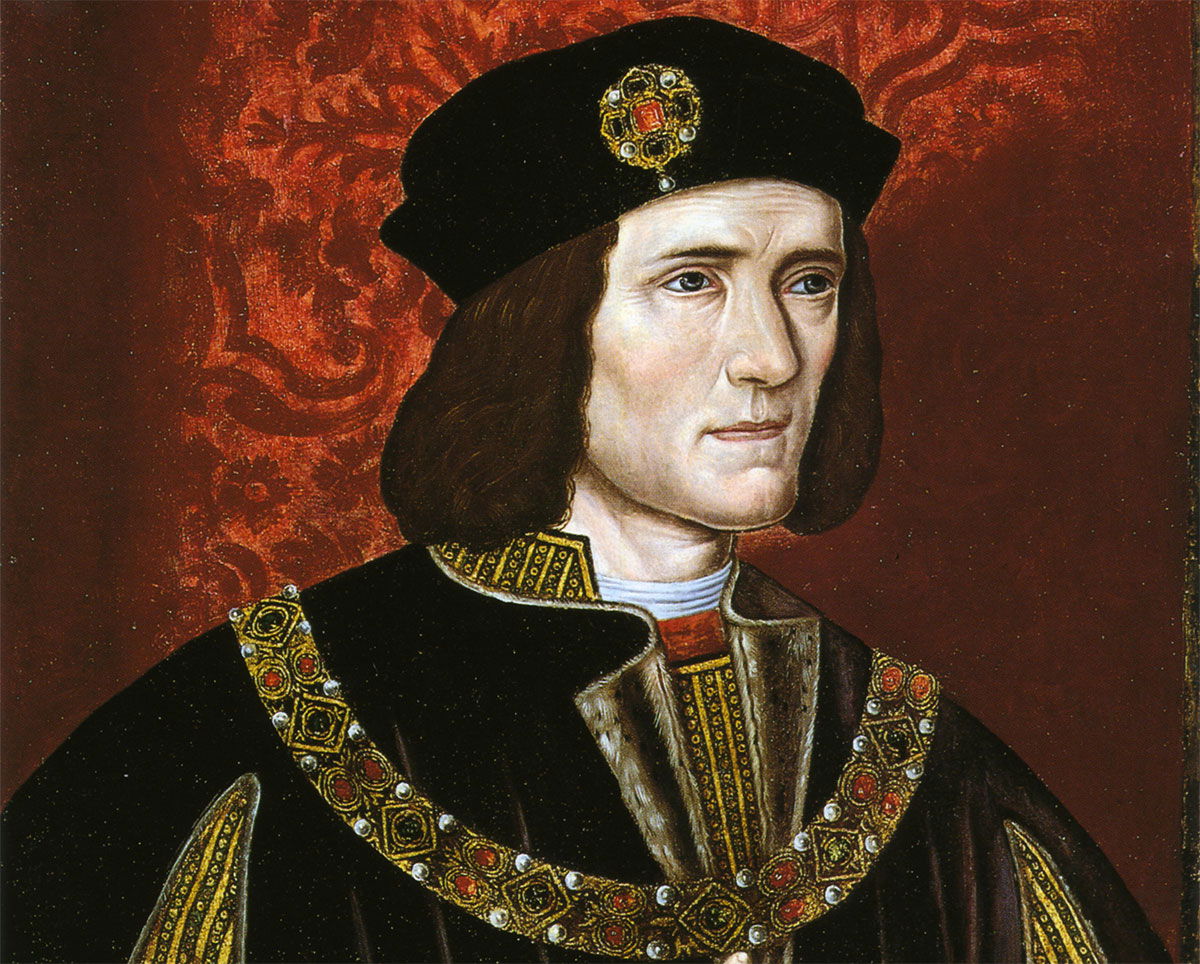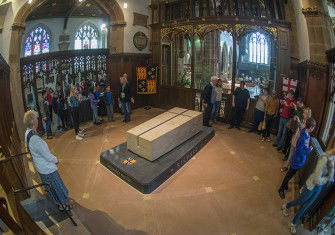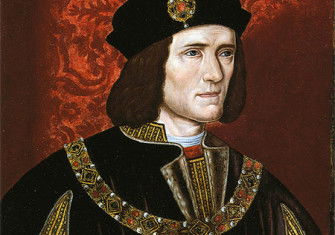The Birth of Richard III
The last Plantagenet king was born on 2 October 1452.

The baby was born at one of his mother’s favourite residences, Fotheringhay Castle in Northamptonshire, the fourth and youngest son of his family. His older brothers were Edward, who was ten, Edmund, nine, and George, four. Descended on both sides from Edward III, they were born into a desperately dangerous world and only the eldest would meet a natural death. The reigning king, Henry VI, was weak, inept and not quite right in the head, and Richard was still a baby when a battle at St Albans in 1455 ushered in the Wars of the Roses, 30 years of sporadic civil war between the houses of Lancaster and York which would end only with his own death in battle at Bosworth Field.
He was named after his father, Richard, Duke of York, Henry VI’s challenger for the throne, and took after him physically – short and dark. A frail baby, he perhaps had one shoulder higher than the other, but he was not hunchbacked or seriously deformed. Nor is it likely that he was two years in the womb and emerged with a full set of teeth. His mother, the pious and beautiful Cecily Neville (‘Cecylee’ she signed herself), was a grand-daughter of John of Gaunt and the aunt of Richard Neville, the ‘Kingmaker’ Earl of Warwick, England’s most powerful magnate and the powerhouse of the Yorkist cause.
Richard probably spent his childhood mainly at Fotheringhay with his mother. When he was seven, in 1459, his father was driven out of England and proclaimed a traitor and outlaw. Richard and George and their mother were handed over by the triumphant Lancastrians to Cecily’s sister Anne, Duchess of Buckingham. They were probably decently treated and within a year Warwick and Richard’s brother Edward won a battle at Northampton and took the King prisoner. Richard’s father returned to England to claim the throne, but the wheel turned again and in December 1460 he was defeated and killed at Wakefield. His severed head was stuck up on the wall of York adorned with a paper crown. Richard’s brother Edmund was caught and killed, too.
Duchess Cecily sent George and Richard abroad to the Duke of Burgundy in the Netherlands. The position in England soon changed again, however, when Edward won a decisive victory at Towton in March 1461. He sent for his brothers, who arrived in London in time for the nineteen-year-old Edward’s coronation in Westminster Abbey in June. George was created Duke of Clarence and Richard Duke of Gloucester. The Archbishop of Canterbury, Thomas Bourchier, apparently had charge of the boys for a time, but Richard was later entrusted to the Earl of Warwick, whose lavish household was said to support 20,000 retainers.
Richard would have been trained in arms, hunting and hawking, dancing and courtesy. He probably spent much of his time at Warwick’s Yorkshire castles of Middleham and Sheriff Hutton. He must have got to know his future wife, Warwick’s younger daughter, Anne Neville (George married her sister Isabel), and he made useful friendships among leading families in the north of England, who came to consider him a northerner, not some alien from the south. He grew into a capable soldier and administrator, and he remained staunchly loyal to Edward IV, unlike his brother George and the Kingmaker, who turned against Edward in 1469 and restored Henry VI to the throne. Anne Neville was married to Henry’s teenage son, the Lancastrian Prince of Wales.
Edward and Richard fled to The Hague, but they returned in 1471 and recovered control. George came back to the fold, Warwick was killed in battle, the Prince of Wales was caught and butchered, possibly by George and Richard, and King Henry was murdered in the Tower of London, allegedly by Richard or while he looked on, supervising. Richard succeeded to Warwick’s commanding position in the north and married the widowed Anne Neville after dramatically carrying her off from George’s house in London. George wanted the whole Neville inheritance for himself and according to one story he disguised Anne as a kitchen maid to hide her.
George’s treacherous intriguing persisted until in 1478 Edward sent him to the Tower where, according to tradition, he was drowned in a butt of malmsey wine. King Edward now reigned unchallenged, with Richard as his efficient lieutenant in the north. Edward’s early death in 1483, however, leaving sons of 12 and nine, pitched Richard into yet another crisis. He took the throne himself, a fatal decision which would bring him the most evil reputation in English history. He was widely believed to have murdered his two nephews in the Tower and when Anne died he had publicly to deny that he had poisoned her. He was 32 when he was killed at Bosworth in 1485.






